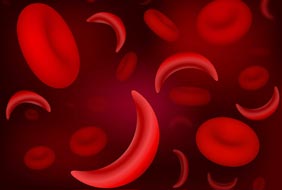 Sickle cell anemia is a serious genetic disease. It is associated with significant pain and often results in stroke, severe infections, progressive organ damage and death, often at a young age. Approximately 25% of all sickle cell anemia patients suffer a stroke prior to age 45. This disease affects about one out of every 365 Black American births and one out of every 16,300 Hispanic births. It is relatively rare in Caucasians.
Sickle cell anemia is a serious genetic disease. It is associated with significant pain and often results in stroke, severe infections, progressive organ damage and death, often at a young age. Approximately 25% of all sickle cell anemia patients suffer a stroke prior to age 45. This disease affects about one out of every 365 Black American births and one out of every 16,300 Hispanic births. It is relatively rare in Caucasians.
Recently, it has also been shown that IV busulfan in combination with fludarabine may be useful for treating sickle cell anemia patients. Sickle cell anemia/sickle cell disease (SCD) is the most common genetic disorder worldwide and remains a disease with high mortality and morbidity. In a recent presentation at the 4 th Global SCD Congress, Paris, France (June 16-18), a combination of IV busulfan and fludarabine was used in patients who received stem cells from (mismatched) family members, and it was noted post transplant:
- All patients engrafted uneventfully and were free of any pain symptoms with excellent quality of life
- No patients developed significant acute or chronic GVHD
Stem cell transplantation is currently the only cure for sickle cell anemia. More than 100,000 people in the United States and more than 1 million worldwide suffer from this disease. It is estimated that the healthcare costs of one patient with this disease exceeds $1 million by age 45. Sickle cell anemia is most prevalent in Africa and India. In some countries in Africa, such as Nigeria, 20 to 30% of the patients suffer from this disease,
